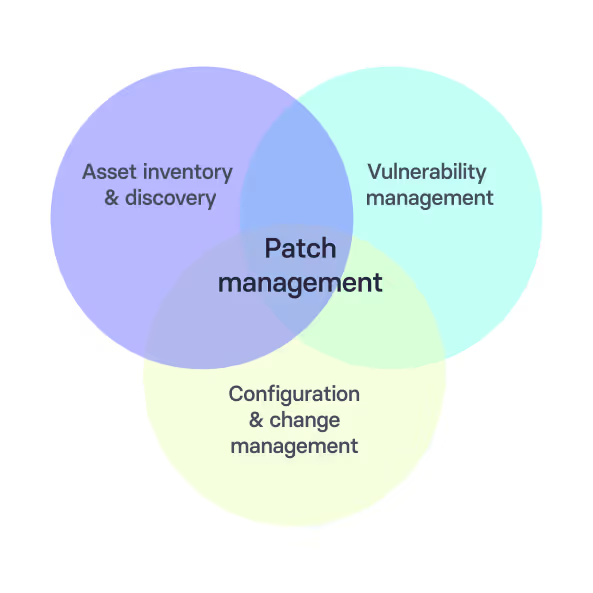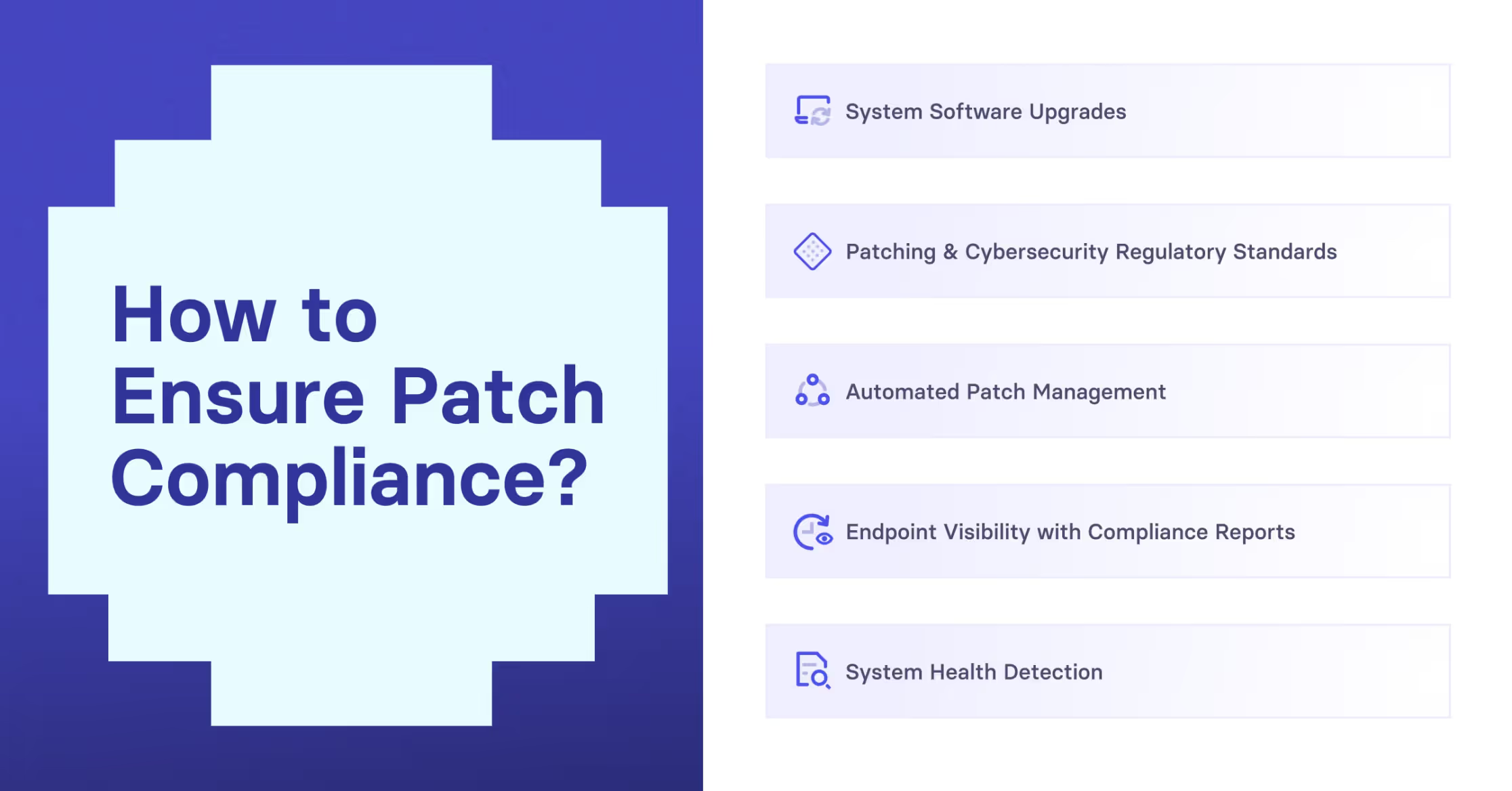
Patching is not the glamorous sort of thing that tends to make it into a quarterly review slide deck. As it’s generally repetitive and often thankless, however, it’s also one of the tasks most commonly procrastinated. Ironically, patching is one of the few security controls with relatively low cost and high return. Hard to sell as exciting, perhaps, but skipping it leaves clients exposed, auditors grumpy, and your ticket queue in flames.
Compliance frameworks: Don’t suggest patching, demand it
There is no modern security standard that treats patching as optional. It is fundamental - a part of the table stakes for demonstrating a grasp of basic risk management. The language varies, but the message is clear: vulnerabilities must be identified, prioritized, and resolved within a timeframe that reflects the associated risk.
It’s worth spelling out what’s really at stake here:
- Missed patches are breach accelerants: Hackers aren’t cracking code like it’s the Matrix, they’re running scans and scripts at scale with all the subtlety and shortsightedness of a herd of drunk rhinos. These days, vibe coding and AI-assisted exploits make unpatched CVEs basically self-solving puzzles. If there’s a known vulnerability in your stack, it’s not low-hanging fruit; it’s fruit that’s been peeled, plated, drizzled in honey, and tagged “please exploit.”
- Unpatched systems increase liability: Once the breach hits, the first question is always: “Was there an available patch?” If there was one, you’ve just unlocked the Negligence achievement. Insurers won’t cover bad habits, and courts won’t care about how busy you were.
- Regulators have little patience: Auditors no longer ask if you have a patching process; they ask how long it took to close CVE-2024-whatever, then check the logs – or vice versa. Waving your hands and mumbling about priorities? “We didn’t get to it” has all the persuasive power of “the watchdog process ate my logs.” These days, compliance is about evidence, not intent. If you’re not tracking patch cadence, or not keeping up, rest assured that someone else will – the auditor(s), the insurer, or the hacker who just made you famous.
For MSPs, this introduces both opportunity and pressure. You’re not just managing your own environment; you’re also responsible for aligning patching practices with each client’s compliance obligations. This becomes particularly complex when those clients are subject to overlapping frameworks like HIPAA, PCI DSS, or ISO 27001. A newer trend aiming to relieve this pressure is the shift toward what’s often called “compliance-as-code.” It’s the idea that patching, like all security controls, should be measurable, automatable, and testable. That means your patching program must include not just remediation steps but traceable evidence of intent, timing, and exception handling.
- Remediation is a control, not a reaction: Compliance frameworks expect proactive handling, not ad hoc cleanup.
- Timeliness must match risk: A critical vulnerability affecting internet-facing systems can’t wait for the next maintenance window.
- Evidence matters: You need the receipts—ticket IDs, install logs, exception approvals, SLA records.
In other words, patching is no longer just IT housekeeping. It’s a front-row seat at the compliance table, and you'd better show up prepared.

Patching in major cybersecurity frameworks
If your clients operate in healthcare, finance, legal, government, or even just handle personal data at scale, odds are they’re beholden to at least one of the major compliance frameworks. While each one has its own style, focus, and favorite acronyms, they all converge on a few core expectations, patching among them:

Your patching process should be able to satisfy any of these frameworks when challenged. Your tooling, documentation, exception handling, and timelines all need to hold up to scrutiny. Eventually, someone will look.
Operationalizing compliance patching as an MSP
Translating compliance requirements into live operational practices is where things get tricky. If you’re managing dozens of clients across different territories, data centers, and verticals, by-the-book patching isn’t going to cut it. The key is building a scalable patching pipeline that accounts for different client priorities while minimizing manual effort. Always start with automation. RMM platforms, vulnerability scanners, and patch orchestration tools need to work together to not just push patches, but to verify deployment and log exceptions.
Patching SLAs also matters more than many MSPs assume. With neither a canonical definition nor a documented agreement on what “timely” means, you risk a mismatch between client expectations and your service delivery. Some sectors may expect critical vulnerabilities to be patched in under 24 hours. Others may prioritize stability over speed. The SLA should reflect this, and your tooling should enforce it.
When patching becomes part of your client’s compliance story, it needs to be told clearly – preferably by you, not an auditor asking why something was missed. Documentation is where the battle is often won or lost:
- Centralize your patching logs: Ideally, these should live in the same ecosystem as your ticketing and RMM platforms.
- Track exceptions proactively: Every skipped patch should have a documented rationale, a risk assessment, and a planned revisit date.
- Generate reports clients understand: Patch coverage over time, average time to remediation, and open exception status are metrics worth surfacing.

Compliance patching as a market differentiator
It’s easy to treat patching as just another line item in a managed services agreement. MSPs that understand how to surface their patching maturity, however, can turn it into a compelling part of their value proposition. Clients, especially those in regulated or high-risk sectors, want proof that their service providers aren’t just checking boxes.
This doesn’t have to mean overwhelming clients with raw log files or sysadmin lingo. It means building narratives around your patching efforts that make sense to a non-technical audience. For instance, a quarterly compliance report might include a section mapping patching performance to the client’s PCI or HIPAA requirements. This not only reinforces your technical competence but builds trust that you’re thinking about their business risks, not just your tooling.
In legal, insurance, and regulatory conversations, these reports become assets. They show a pattern of good-faith effort, backed by evidence. And in the unfortunate event of a breach, they help insurers, regulators, and legal teams establish two things they all care about deeply: that you acted with due diligence, and that you’ve got the receipts to prove it.
Patching: More than a chore, it’s a survival trait
There’s no finish line in patching. It’s not a project you complete and walk away from. It’s a living process that needs tuning, oversight, and constant adjustment as new threats emerge and client environments evolve. Review your playbooks. Audit your exception tracking. Refine your SLAs. Don’t just ask if the patches are getting installed; ask if the story your reports are telling would hold up in front of a regulator. That’s the bar, and the right tools can do most of the heavy lifting for you.
vRx by Vicarius helps MSPs take the chaos out of patching by offering a unified, automated platform designed for modern vulnerability management. Instead of juggling disconnected tools for detection, prioritization, and remediation, vRx brings them together with real-time risk analysis, auto-patching, and clear exception handling workflows. Its continuous monitoring and adaptive prioritization help MSPs stay ahead of threat actors and auditors alike, without drowning in manual effort or post-incident cleanups.
More importantly, vRx was built with compliance visibility baked in. Its reporting features allow MSPs to produce audit-ready evidence on demand. Patch timelines, exceptions, risk scores, and remediation actions are all tracked, logged, and easy to surface for clients or regulators. That means patching moves from a hidden maintenance task to a demonstrable security control that clients and compliance frameworks recognize and value.
As the pace of vulnerability disclosure accelerates and attackers increasingly automate their exploits, continuous, risk-driven patching isn’t just good practice – it’s become an essential online business survival trait.
.avif)











